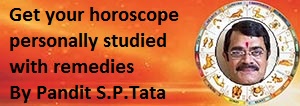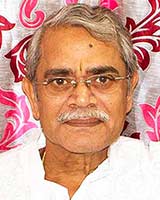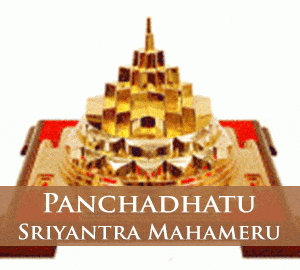Bhakti Yoga—Classes Of Worship
At the lowest rung of the ladder of Bhakti Yoga comes the worship of elements and departed spirits. This is the lowest form of worship. Next comes the worship of Rishis, Devas and Pitris. The faith of each is shaped according to his own nature. The man consists of that which his faith is, he is even that. The third class includes those followers who worship Avataras like Sri Rama, Krishna, Narasimha. The above four classes of Bhaktas have the Saguna form of worship. Next comes the class of Bhaktas who do Nirguna Upasana on Brahman devoid of attributes. This is the highest form of worship that is suitable for the intelligent people who have strong will and bold understanding. This is known as Ahamgraha Upasana or Jnana Yoga Sadhana.
Bhakti can be acquired and cultivated. Practice of the Nava Vidha Bhakti (nine methods of devotion) will infuse Bhakti. Constant Satsanga, Japa, Prayer, meditation, Svadhyaya, Bhajan, service to saints, Dana, Yatra, etc., will develop Bhakti. The following are the nine methods of developing Bhakti:
Sravana:—hearing of the Lilas of God
Smarana:—remembering God always
Kirtan:—singing His praise
Vandana:—Namaskaras to God
Archana:—offerings to God
Pada-Sevana:—attendance
Sakhya:—friendship
Dasya:—service
Atma-nivedana:—self-surrender to Guru or God
Sri Ramanuja recommends the following measures of developing Bhakti:—
Viveka:—discrimination
Vimoka:—freedom from all else and longing for God
Abhyasa:—continuous thinking of God
Kriya:—doing good to others
Kalyana:—wishing well to all
Satyam:—truthfulness
Arjavam:—integrity
Daya:—compassion
Ahimsa:—non-violence
Dana:—charity
Namdev, Ramdas, Tulsidas and others were a few blessed souls to whom God gave His Darshan. These Bhaktas were Yoga-Bhrashtas. They came into this world with a great asset of spiritual Samskaras. They worshipped God in several births with sincere devotion. They did not do much Sadhana in their final incarnation. This devotion was natural and spontaneous in them on account of the force of previous Samskaras of Bhakti. Ordinary people should adopt drastic, special measures and do special Sadhana for developing Bhakti rapidly. New grooves, new channels have to be cut in the old stony, devotionless heart to a maximum degree. Through constant prayer, Japa, Kirtan, service to Bhaktas, charity, Vrata, Tapas, Dhyana and Samadhi a Bhakta should raise his consciousness to a high degree and acquire Para Bhakti, highest knowledge and Supreme peace. In the advanced stages of meditation, the meditator and the meditated, the worshipper and the worshipped, the Upasaka and the Upasya will become one. Dhyana will terminate in Samadhi. Constant and regular practice is necessary.
A Hatha Yogi reaches the highest stage by the practice of various Mudras, Bandhas, Asanas and other exercises; a Jnani by the practice of Sravana, Manana and Nididhyasana; a Karma Yogin by the selfless works (Nishkama Seva); a Bhakta by developing Bhakti and self-surrender, and a Raja Yogi by deep concentration and manipulation of the mind. The Goal is the same in all cases but the methods are different.
Concentration and meditation on the primordial energy, Shakti, is only a modification of Jnana Yogic Sadhana. Concentration and meditation on the different centres of energy belongs to Raja Yoga. Concentration at the different Chakras and Nadis and awakening the Shakti through physical methods belong to Hatha Yoga. Concentration and meditation on the Devata, presiding deity of the different inner Chakras, may be taken as an advanced course in Bhakti Yoga. For quick success, different methods of Sadhana should be combined.
The Bhakta when he meditates on the presiding deity or Devata, imagines a particular form of God at each Chakra. In books of Mantra Shastra, elaborate descriptions of God and the Devatas are given for each Chakra. According to the temperament of the students they take the form of God in a different way. The experiences and feelings of the aspirants vary in all cases. Therefore I am not giving the descriptions of all the Devas
Mantras
Awakening Kundalini is effected by Mantra also. It is a portion of Bhakti Yoga. Some aspirants should repeat the Mantra given by their Guru even lakhs of times. During the time of Diksha of an Uttama Adhikari, the Guru utters a particular Mantra and Kundalini is awakened immediately. The consciousness of the student is raised to a very high degree. This depends upon the faith of the student in his Guru and in the Mantra. Mantras, when received from the Guru in person, are very powerful. Aspirants in Kundalini Yoga should take to this Mantra Sadhana only after getting a proper Mantra from a Guru. Therefore I am not touching this point in detail. Mantras when learnt through ordinary friends or through books cannot produce any benefit at all. Mantras are numerous and the Guru should select a particular Mantra by which the consciousness of a particular student can be awakened.
Eight Major Siddhis
An accomplished, Purnayogi in the path of Kundalini Yoga is in possession of eight major Siddhis, viz., Anima, Mahima, Laghima, Garima, Prapti, Prakamya, Vasitvam and Ishitvam.
1. Anima: The Yogi can become as minute as he pleases.
2. Mahima: This is the opposite of Anima. He can become as big as he likes. He can make his body assume a very large size. He can fill up the whole universe. He can assume a Virat Svarupa.
3. Laghima: He can make his body as light as cotton or feather. Vayustambhanam is done through this Siddhi. In Jalastambhanam also the power is exercised to a very small degree. The body is rendered light by Plavini Pranayama. The Yogi produces a diminution of his specific gravity by swallowing large draughts of air. The Yogi travels in the sky with the help of this Siddhi. He can travel thousands of miles in a minute.
4. Garima: This is the opposite of Laghima. In this the Yogi acquires an increase of specific gravity. He can make the body as heavy as a mountain by swallowing draughts of air.
5. Prapti: The Yogi standing on the earth can touch the highest things. He can touch the sun or the moon or the sky. Through this Siddhi the Yogi attains his desired objects and supernatural powers. He acquires the power of predicting future events, the power of clairvoyance, clairaudience, telepathy, thought-reading, etc. He can understand the languages of the beasts and birds. He can understand unknown languages also. He can cure all diseases.
6. Prakamya: He can dive into the water and can come out at any time he likes. The late Trilinga Swami of Benares used to live for six months underneath the Ganges. It is the process by which a Yogi makes himself invisible sometimes. By some writers it is defined to be the power of entering body of another (Parakaya Pravesh). Sri Sankara entered the body of Raja Amaruka of Benares. Tirumular in Southern India entered the body of a shepherd. Raja Vikramaditya also did this. It is also the power of keeping a youth-like appearance for any length of time. Raja Yayati had this power.
7. Vashitvam: This is the power of taming wild animals and bringing them under control. It is the power of mesmerising persons by the exercise of will and of making them obedient to one’s own wishes and orders. It is the restraint of passions and emotions. It is the power to bring men, women and the elements under subjection.
8. Ishitvam: It is the attainment of divine power. The Yogi becomes the Lord of the universe. The Yogi who has this power can restore life to the dead. Kabir, Tulsidas, Akalkot Swami and others had this power of bringing back life to the dead.











